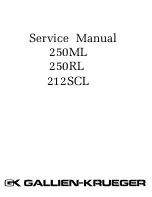
NuPower
TM
S100A01 User Manual
Rev 1.0
6
2.3
HEAT SINKING
The NuPower S100A01 is offered as a stand-alone module or with an optional heat sink
(p/n: HTSK-07), which includes a 28 VDC fan-cooled heatsink and requisite power cable.
Caution: The use of external heat-sinking is required especially for those applications
requiring high duty cycle operation (e.g. continuous wave) or for extended on-time testing.
Operation without a proper heat sink under these conditions will cause permanent damage
to the product and will void the product warranty.
The maximum operating temperature of the module only is 70
˚ C
(baseplate).
3
SETUP AND OPERATION
This section provides specific details for proper operation of the NuPower S100A01 module. Following
these guidelines will prevent damage to the power amplifier or external equipment.
3.1
POWER SUPPLY REQUIREMENTS
To operate the NuPower S100A01, ensure that the power supply has adequate overhead to source the
current demand of the RF power amplifier. The power supply source must provide a typical voltage of
+28 VDC with greater than 13 amps capability.
3.2
CONNECTING A PROPER LOAD TO THE ANTENNA TERMINAL
To prevent damage to the PA, the antenna terminal must be terminated into a 50
Ω load. Exam
ples of a
proper load include:
•
Directly connecting to an antenna specified for the frequency range (2000 MHz to 2500 MHz).
Connecting to an inappropriate antenna may result in damage to the PA module.
•
Connecting to a proper antenna through a 50Ω transmission line or coaxial cable. Avoid using
damaged cables or corroded connectors while attaching the unit to an antenna.
•
Terminating the antenna terminal into a 50
Ω
high power attenuator with minimum 20 dB
attenuation.
•
Connecting to a load capable of dissipating the RF power from the PA module. Loads capable of
handling 200 Watts (min) are recommended.
3.3
POWERING-UP THE NUPOWER S100A01
The NuPower S100A01 must be terminated to a proper load before power is applied. Refer to Section
3.2 for the specifications of the proper load. After the PA is properly terminated, the interface cable can
be connected to the unit and power can be applied. The PA is now ready for operation.






























